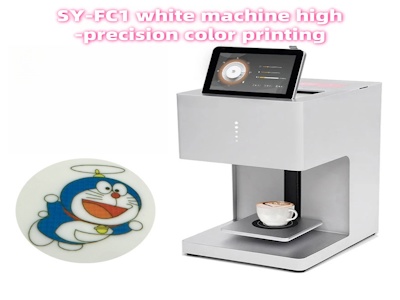В современном мире бизнеса, где конкуренция достигает невероятных высот, каждый предприниматель ищет способы оптимизировать свои процессы и увеличить прибыль. Одним из ключевых аспектов, особенно в производственном секторе, является повышение производительности станков. Но действительно ли это выгодно? Или это просто очередная модная тенденция, которая не приносит реальных результатов? В этой статье мы глубоко погрузимся в тему, анализируя экономические, технологические и стратегические аспекты, чтобы дать вам четкий ответ.
Введение: почему производительность станков так важна
Производительность станков — это не просто технический показатель; это фундамент, на котором строится успех любого производственного предприятия. Высокая производительность означает больше продукции за меньшее время, что напрямую влияет на себестоимость и, следовательно, на конкурентоспособность компании. В эпоху глобализации, когда рынки переполнены предложениями, businesses must leverage every advantage to stay ahead.
Consider this: a study by McKinsey & Company shows that companies that invest in productivity improvements see an average increase in profitability of 15-20% within the first year. This isn't just a number; it's a testament to the power of optimization. But let's break it down further. What exactly does 'повышение производительности станков' entail? It involves upgrading machinery, implementing automation, training staff, and adopting lean manufacturing principles. Each of these elements plays a crucial role in driving efficiency.
Экономические выгоды: цифры говорят сами за себя
Когда речь заходит о бизнесе, все сводится к деньгам. Повышение производительности станков может значительно снизить операционные расходы. Например, модернизация старого оборудования на новые, более эффективные модели может сократить энергопотребление на up to 30%. This translates to lower utility bills and a smaller carbon footprint, which is increasingly important in today's eco-conscious market.
Moreover, increased productivity means higher output without proportional increases in labor costs. Imagine a scenario where your machines produce 20% more units per shift. This doesn't just boost revenue; it improves your margin per unit, making your business more resilient to market fluctuations. A real-world example: Toyota's implementation of the Toyota Production System (TPS) revolutionized automotive manufacturing by focusing on efficiency, leading to massive cost savings and industry dominance.
But it's not just about immediate gains. Investing in productivity can have long-term payoffs. For instance, predictive maintenance technologies can prevent costly downtimes. According to a report by Deloitte, unplanned downtime costs manufacturers an average of $260,000 per hour. By enhancing machine productivity through IoT sensors and AI, businesses can avoid these losses and ensure continuous operation.
Технологические инновации: двигатель прогресса
Технологии развиваются стремительными темпами, и производственный сектор не является исключением. От Industry 4.0 до искусственного интеллекта — современные станки оснащены capabilities that were unimaginable a decade ago. For example, CNC machines with advanced software can perform complex tasks with precision, reducing error rates and material waste.
Automation is another game-changer. Collaborative robots (cobots) can work alongside humans, handling repetitive tasks while employees focus on higher-value activities. This not only boosts productivity but also enhances job satisfaction and safety. A case in point: Siemens' digital factory in Amberg, Germany, where automation has increased productivity by over 1000% since the 1990s, with defect rates below 0.001%.
Furthermore, data analytics plays a pivotal role. By collecting and analyzing data from machines, businesses can identify bottlenecks, optimize workflows, and make informed decisions. Tools like digital twins allow for simulation and testing without physical prototypes, saving time and resources. The integration of cloud computing enables real-time monitoring from anywhere, ensuring that production never sleeps.
Стратегические преимущества: beyond the bottom line
Повышение производительности isn't just about cutting costs; it's about building a competitive edge. In a crowded market, the ability to deliver products faster and more reliably can be a key differentiator. Customers today expect quick turnarounds and high quality, and businesses that meet these demands gain loyalty and market share.
Additionally, investing in productivity demonstrates a commitment to innovation and sustainability, which can enhance brand reputation. Governments and consumers alike are pushing for greener practices, and efficient machines often consume less energy and produce less waste. This alignment with environmental goals can open doors to new opportunities, such as subsidies or partnerships.
From a strategic perspective, higher productivity allows for scalability. As demand grows, a well-optimized production line can handle increased volumes without significant additional investment. This flexibility is crucial in today's volatile economy, where businesses must adapt quickly to changes.
Вызовы и как их преодолеть
Конечно, повышение производительности не лишено challenges. Initial investments can be substantial, and there may be resistance to change from employees. However, these hurdles are manageable with proper planning. For instance, phased implementation can spread costs over time, and training programs can ease the transition for staff.
It's also important to choose the right technologies. Not every innovation will suit every business. Conducting a thorough cost-benefit analysis and consulting with experts can help identify the most impactful upgrades. Remember, the goal is not to adopt every new gadget but to select solutions that align with your specific needs and goals.
Заключение: однозначно да, это выгодно!
В заключение, повышение производительности станков не просто выгодно — это необходимость для любого бизнеса, стремящегося к росту и устойчивости. Экономические выгоды, технологические advancements, and strategic advantages make it a wise investment. While challenges exist, they are far outweighed by the potential rewards. As we move further into the digital age, businesses that embrace productivity enhancements will not only survive but thrive.
So, if you're still wondering whether it's worth it, the answer is a resounding yes. Start by assessing your current operations, identifying areas for improvement, and taking the first step towards a more efficient and profitable future. Your business—and your bottom line—will thank you.
Ключевые выводы:
- Повышение производительности станков может увеличить прибыльность на 15-20%.
- Технологические инновации, такие как автоматизация и аналитика данных, являются crucial drivers.
- Стратегические преимущества включают improved competitiveness and scalability.
- Преодоление вызовов requires careful planning and investment.
Thank you for reading. If you found this article insightful, share it with your network and start the conversation on optimizing your production processes today!






